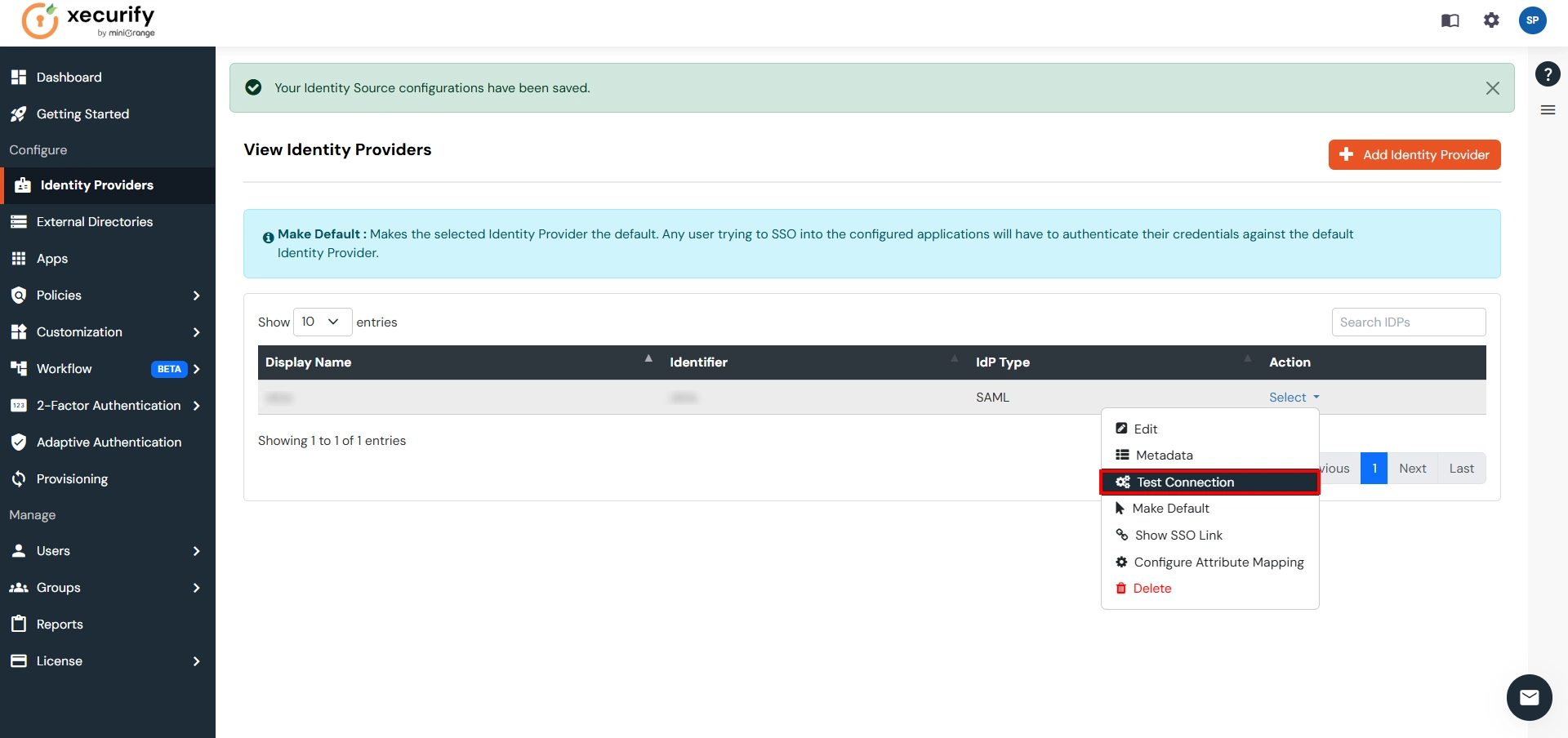Contents
Ping One as IDP – Cloud SAML
Part 2: Setup miniOrange with PingOne
Step 1. Setup PingOne as Identity Provider
- Login to your PingOne environment as the administrator. Click on your ProfileAdmin.
- Go to ApplicationsAdd ApplicationNew SAML Application.
- Enter the application details and click Continue. Application Name, Application Description, and Category are required fields. For logos and icons, PNG is the only supported graphics format.

Provide the SAML configuration details for the application.
- Signing. In the dropdown list, select the signing certificate you want to use.
- SAML Metadata. Click Download to retrieve the SAML metadata for Ping One. This supplies the PingOne connection information to the application.
- Protocol Version. Select the SAML protocol version appropriate for your application.
- Upload Metadata. Click Choose File to upload the application’s metadata file. When you are manually assigning an Entity ID value, the Entity ID must be unique, unless you are assigning the Entity ID value for a private, managed app (an app that is supplied & configured by PingOne for Enterprise administrator, rather than an SP.
- Single Logout Endpoint. The URL to which our service will send the SAML Single Logout (SLO) request using the Single Logout Binding Type that you select.
- Single Logout Response Endpoint. The URL to which your service will send the SLO Response.
- Single Logout Binding Type. Select the binding type (Redirect or POST) to use for SLO.
- Primary Verification Certificate. Click Choose File to upload the primary public verification certificate to use for verifying the SP signatures on SLO requests and responses.
- Signing Algorithm. Use the default value or select the algorithm to use from the dropdown list.
You can also provide following optional attributes.
- Encrypt Assertion. If selected, the assertions PingOne sends to the SP for the application will be encrypted.
- Encryption Certificate: Upload the certificate from miniOrange plugin to use to encrypt the assertions.
- Encryption Algorithm: Choose the algorithm to use for encrypting the assertions. We recommend AES_256 (the default), but you can select AES_128 instead.
- Transport Algorithm: The algorithm used for securely transporting the encryption key. Currently, RSA-OAEP is the only transport algorithm supported.
- Force Re-authentication. If selected, users having a current, active SSO session will be re-authenticated by the identity bridge to establish a connection to this application.
- Click Continue to Next Step. The SSO Attribute Mapping page is displayed.
- In the Attribute Mapping, Modify or add any attribute mappings as necessary for the application.
- The summary information for the application configuration is then displayed on a new page and the new SAML application is added to your My Applications list.
- Go to miniOrange Admin Console.
- From the left navigation bar select Identity Provider. Then click on Add Identity Provider
- Select SAML tab.
- Click on Show Metadata details under For SP - INITIATED SSO. You can either manually enter details or use Metadata URL or File
- Now to create SAML app for PingOne, go to the Add Identity Provider page and click on Import IDP Metadata. Import the metadata file that you will get from the SAML Login Information section of PingOne.
- If you don't have a metadata file, you can also provide the details manually. You need to configure following endpoints:
- Few other optional features that can be added to the Identity Provider(IDP) are listed in the table below:
- Click on Save.


Step 2. Setup miniOrange as Service Provider


You can get the metadata details of miniOrange app either by clicking on the link
shown by "Click here" in the yellow block, Or you can also get the details after creating the
app. Keep these details handy as we will need these in configuring PingOne.


| IDP Entity ID | Entity ID of IDP |
| Single Login URL | Login Url from IDP |
| Single Logout URL | Logout Url from IDP |
| X.509 Certificate | The public key certificate of your IDP. |
| Domain Mapping | Can be used to redirect specific domain user to specific IDP |
| Show IdP to Users | Enable this if you want to show this IDP to all users during Login |
| Send Configured Attributes | Enabling this would allow you to add attributes to be sent from IDP |
Step 3. Test connection between miniOrange and PingOne
- Go to the miniOrange Admin Dashboard.
- Go to Identity Providers tab. Then click on select button under the app you just created. Then click on Test Connection.
- A new popup login window will open. Enter your credentials and login.
- Now you will see TEST SUCCESSFUL in a new popup window. If not, then check if you have missed any of the above step.

×
![ADFS_sso]()
